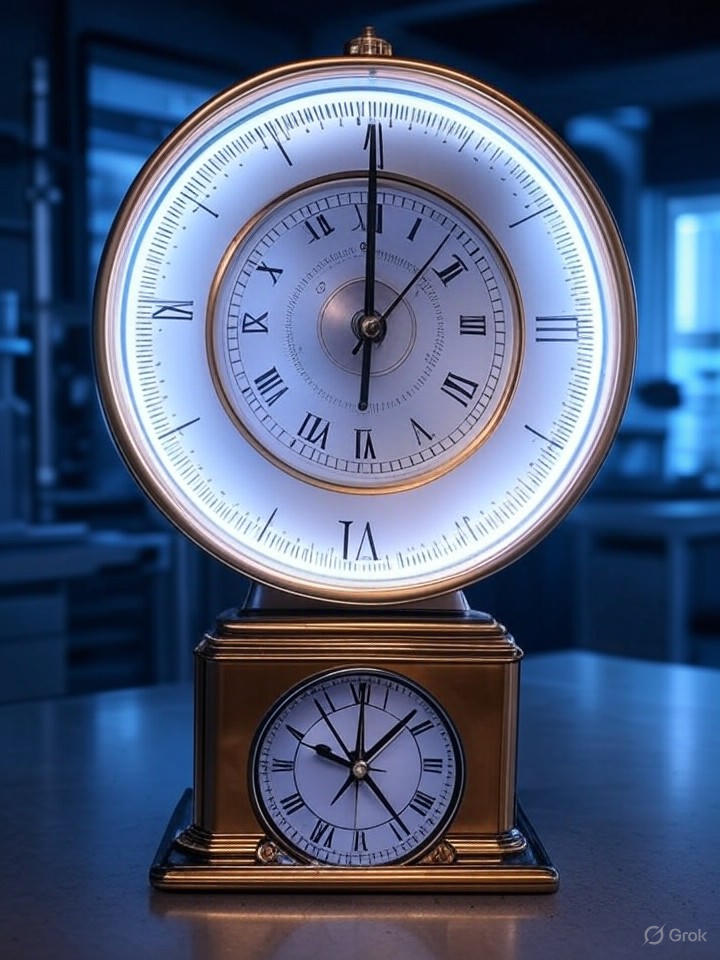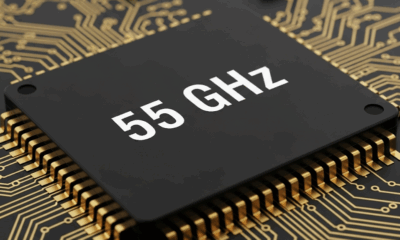Science
Quantum Breakthrough Boosts Atomic Clocks for Space Navigation

Researchers at JILA, a joint institute of the University of Colorado Boulder and the National Institute of Standards and Technology (NIST), have made a groundbreaking discovery that enhances the precision of atomic clocks. This advancement has the potential to revolutionize space navigation, enabling spacecraft to traverse the cosmos with unmatched accuracy. The study, published in the journal Nature, details how scientists achieved this by circumventing a fundamental quantum limit that has long restricted atomic clock sensitivity.
The core of this innovation lies in addressing quantum projection noise, a significant barrier that affects the performance of atomic clocks. By employing a technique involving spin-squeezed states, the research team effectively reduced this noise, enabling measurements that maintain high precision without breaching Heisenberg’s uncertainty principle. According to reports from Popular Mechanics, this development could improve the stability of atomic clocks by factors that may redefine timekeeping across various extreme environments.
Advancements in Quantum Measurement Techniques
Atomic clocks are crucial for modern navigation systems, including GPS and various scientific applications. In the context of interstellar travel, where even minor errors can result in significant discrepancies over vast distances, this enhanced precision is invaluable. The discovery builds upon decades of quantum research, pushing the boundaries of metrology.
The innovative technique involves preparing atoms in entangled states, allowing the clock to more effectively average out noise. This results in a signal-to-noise ratio that far exceeds traditional limits. As highlighted in a report by Yahoo News, the implications for future navigation capabilities are extensive, potentially paving the way for advancements in areas such as earthquake prediction and the exploration of dark matter.
In the realm of space exploration, current propulsion concepts, such as those examined in NASA’s Breakthrough Propulsion Physics program, face navigation challenges. With the introduction of highly precise atomic clocks, spacecraft could better account for relativistic effects and gravitational influences, making missions to distant stars more viable. Industry experts note that this aligns with ongoing initiatives by companies like SpaceX and Blue Origin to enhance deep-space capabilities.
Applications Beyond Space Exploration
This technology also holds significant promise in fields such as geophysics, where enhanced atomic clocks could facilitate the detection of subtle shifts in the Earth’s gravitational field. Such advancements may improve earthquake prediction by providing greater sensitivity in monitoring tectonic movements. Coverage from ScienceDaily emphasizes that precision measurements are critical for advancing quantum technologies, including potential applications in teleportation and quantum computing.
The JILA team conducted their experiment using strontium atoms cooled to near absolute zero and trapped in an optical lattice. By squeezing spin states, they managed to reduce uncertainty in one measurement axis while increasing it in another, effectively navigating quantum constraints. The study reports achieving a clock stability of 10^-18, a level capable of maintaining accuracy over the age of the universe. Previous efforts, such as those from the Wineland group at NIST, established foundational techniques, but this latest approach scales the effects to larger ensembles of atoms.
According to the researchers, “We found a way around an important quantum physics law,” underscoring the significance of this breakthrough. The integration of this technology with quantum sensors currently in development at firms like IBM and Google could further expand its applications.
Transitioning this advanced technology from laboratory settings to practical applications poses significant engineering challenges. Atomic clocks need to be ruggedized for space environments, capable of withstanding radiation and vibrations. NASA’s Deep Space Atomic Clock, launched in 2019, represents an initial step towards this goal, but the newly discovered loophole could enhance its successors, potentially enabling autonomous navigation for missions to Mars or beyond.
Experts like Avi Loeb have emphasized the importance of precise timing in tracking celestial objects. The recent perihelion passage of the interstellar object 3I/ATLAS on October 29, 2025, provided real-world data that could benefit from the advancements in atomic clock technology for future observations.
The financial landscape surrounding quantum technologies is thriving, with considerable investments directed towards startups such as Quantinuum, which recently introduced cutting-edge quantum computers. Progress in quantum computing components has reportedly reduced sizes by 1000x, paralleling the advancements in atomic clocks and suggesting a convergence of technologies suited for space applications.
Future Prospects and Challenges
Looking ahead, the potential applications of these precise atomic clocks extend beyond space exploration. They could aid in detecting minute gravitational anomalies that might indicate the presence of dark matter. Current detectors, such as those utilized at CERN, could benefit from these clocks to improve timing in particle collisions, potentially unveiling new physics.
Caution is warranted, however, as experts remind us that while the loophole represents a significant breakthrough, scaling these technologies for interstellar travel necessitates further integration with propulsion systems, which remain largely theoretical. Articles in Nature Physics suggest complementary approaches, such as light-based propulsion, but true warp drives remain a concept of science fiction.
Enthusiasm for quantum advancements continues to grow, with discussions on social media platforms reflecting excitement around potential applications, including quantum teleportation, which could enhance secure communications for interstellar probes. This synergy hints at a future where quantum technologies play a pivotal role in humanity’s quest to explore the stars.
Industry insiders view this breakthrough as a catalyst for investment in the quantum sector. Analysts predict significant growth in space economies, linking it to broader digital transformation trends where artificial intelligence and quantum technology converge for optimized space missions. Regulatory bodies, including the FAA and various international space agencies, are monitoring these developments to ensure safety in navigation standards.
As the threat of earthquakes persists globally, the predictive potential of enhanced atomic clocks could save lives, with pilot programs potentially commencing in seismic hotspots like California or Japan. Collaborations between academic institutions such as JILA and industry leaders could accelerate the deployment of this groundbreaking technology.
In summary, the recent advancements in atomic clock technology not only challenge our understanding of quantum physics but also expand the toolkit available for exploring the unknown. With ongoing research and development, the dream of interstellar travel moves closer to reality, propelled by the precision that defies quantum limits.
-

 Technology5 months ago
Technology5 months agoDiscover the Top 10 Calorie Counting Apps of 2025
-

 Health3 months ago
Health3 months agoBella Hadid Shares Health Update After Treatment for Lyme Disease
-

 Health3 months ago
Health3 months agoErin Bates Shares Recovery Update Following Sepsis Complications
-

 Technology4 months ago
Technology4 months agoDiscover How to Reverse Image Search Using ChatGPT Effortlessly
-

 Technology1 month ago
Technology1 month agoDiscover 2025’s Top GPUs for Exceptional 4K Gaming Performance
-

 Technology3 months ago
Technology3 months agoElectric Moto Influencer Surronster Arrested in Tijuana
-

 Technology5 months ago
Technology5 months agoMeta Initiates $60B AI Data Center Expansion, Starting in Ohio
-

 Technology5 months ago
Technology5 months agoRecovering a Suspended TikTok Account: A Step-by-Step Guide
-

 Health4 months ago
Health4 months agoTested: Rab Firewall Mountain Jacket Survives Harsh Conditions
-

 Lifestyle5 months ago
Lifestyle5 months agoBelton Family Reunites After Daughter Survives Hill Country Floods
-

 Technology4 months ago
Technology4 months agoHarmonic Launches AI Chatbot App to Transform Mathematical Reasoning
-

 Health3 months ago
Health3 months agoAnalysts Project Stronger Growth for Apple’s iPhone 17 Lineup





















